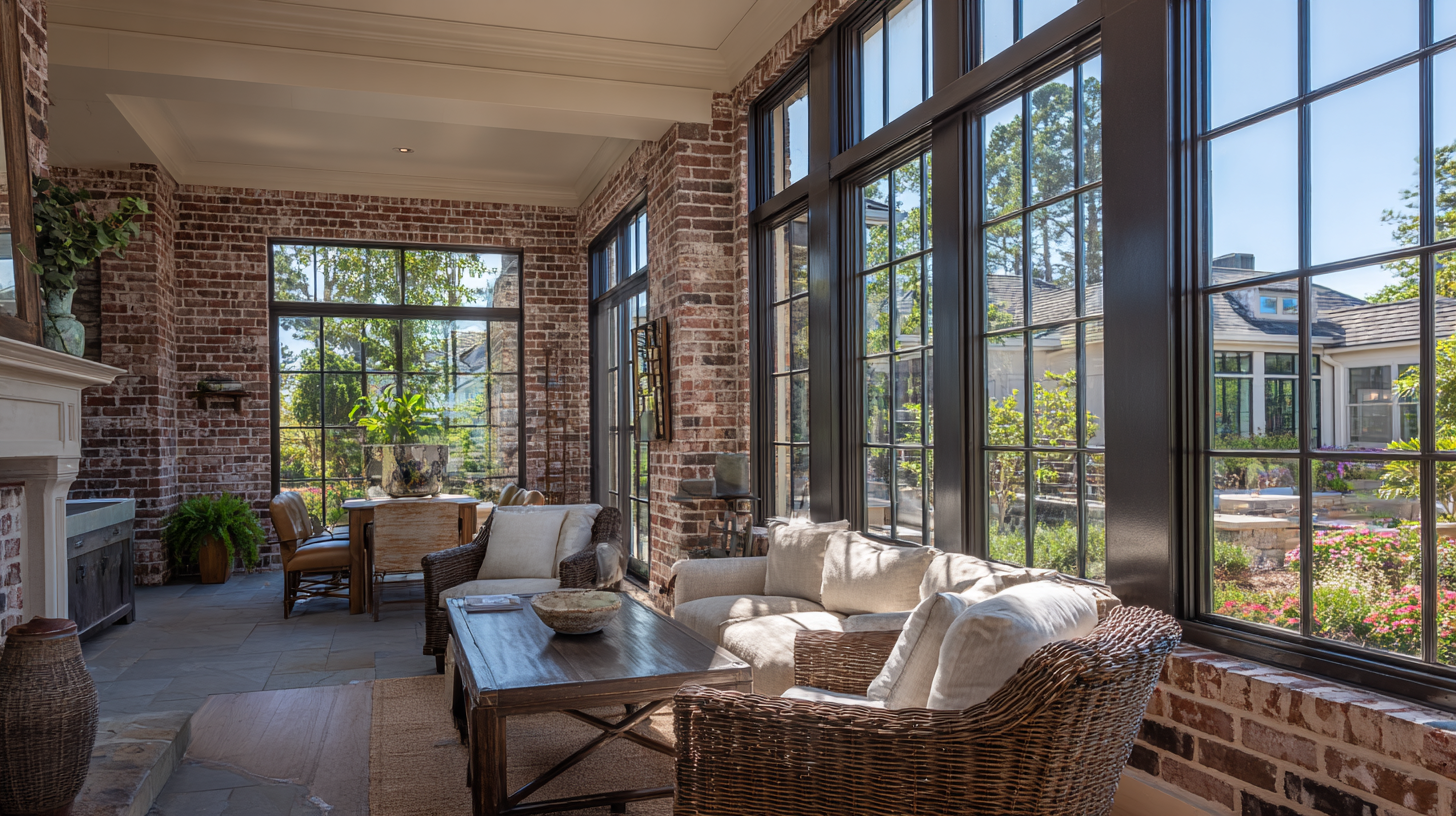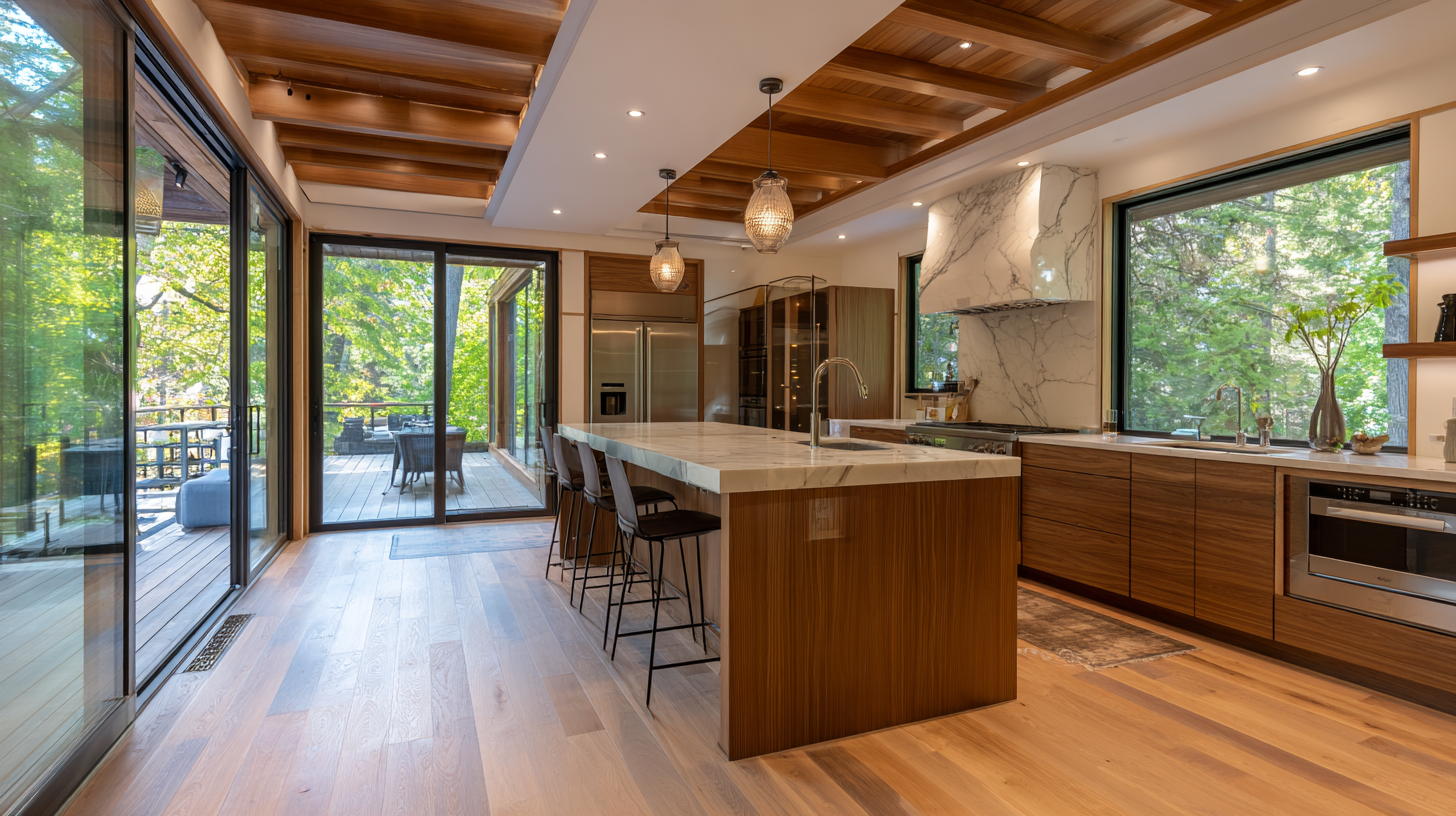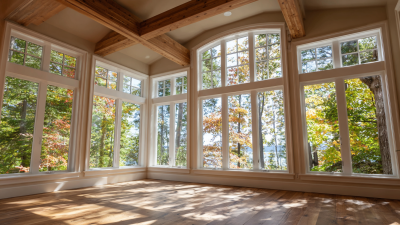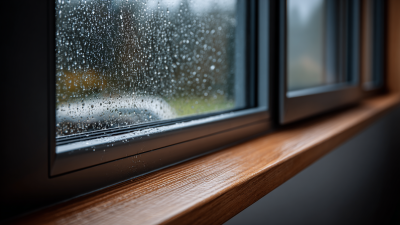Blog
Exploring the Benefits of Energy Efficient Residential Windows in Modern Homes
In today's quest for sustainability and energy efficiency, homeowners are increasingly turning their attention to the pivotal role of residential windows in enhancing the overall performance of modern homes. Energy-efficient residential windows not only provide aesthetic appeal and enhance natural lighting but also play a crucial role in reducing energy consumption and lowering utility bills.

By meticulously selecting windows that feature advanced technologies, such as double or triple glazing and low-emissivity coatings, homeowners can significantly improve their indoor comfort while minimizing their ecological footprint. This article delves into the myriad benefits of energy-efficient residential windows, offering practical insights on choosing the right options that align with both personal preferences and environmental goals.
Embracing these innovations not only promotes a sustainable lifestyle but also adds long-term value to residential properties, making energy-efficient windows a wise investment for any modern home.
Choosing the Right Energy Efficient Windows for Your Home
When choosing the right energy-efficient windows for your home, it’s essential to understand the different types available and their benefits. According to the U.S. Department of Energy, windows account for 25-30% of residential heating and cooling energy use. Opting for double or triple-paned windows can significantly reduce energy loss. Additionally, low-emissivity (Low-E) glass can help reflect heat back into your home during winter while keeping heat out during the summer.

Tip: When selecting windows, look for those with the
ENERGY STAR label, as they meet strict energy
efficiency guidelines set by the EPA.
Furthermore, consider the
frame materials.
Vinyl and
fiberglass frames offer better insulation than
traditional wood or aluminum frames. According to the
National Fenestration Rating Council (NFRC), window frames can influence energy efficiency by impacting
the overall R-value. A higher R-value means better insulating properties, which translates into
lower energy bills.
Tip: Don’t forget about proper installation. Even the most efficient windows won't
perform well if they are not installed correctly. Hiring a certified professional can ensure your
windows maximize their energy-saving potential.
Understanding Window Ratings and Energy Performance Metrics
When exploring energy-efficient residential windows, understanding window ratings and energy performance metrics is crucial. The National Fenestration Rating Council (NFRC) provides a standardized approach to assessing window performance, which includes ratings for U-factor, solar heat gain coefficient (SHGC), visible transmittance (VT), and air leakage. These metrics allow homeowners to make informed decisions that can enhance energy efficiency and comfort. According to the U.S. Department of Energy, upgrading to energy-efficient windows can reduce energy bills by up to 15%, making it a worthwhile investment for modern homes.
A key element in evaluating windows is the U-factor, which measures the rate of heat transfer. A lower U-factor indicates better insulating properties, with a recommended range between 0.20 and 0.30 for optimal efficiency. Additionally, the SHGC rating measures how much solar heat is absorbed; a lower SHGC is beneficial in warmer climates to minimize cooling costs. Understanding these ratings not only helps in selecting the right windows but also contributes to achieving energy performance goals, as homes with efficient windows can perform significantly better in energy audits, often receiving higher overall energy efficiency scores.
Energy Efficiency Ratings of Residential Windows
This bar chart illustrates the U-Factor of different types of residential windows, demonstrating how energy-efficient options, such as triple-pane and low-emissivity (Low-E) glass, significantly reduce heat transfer, contributing to improved energy performance in modern homes.
Comparing Different Types of Energy Efficient Windows
When considering energy-efficient windows for modern homes, it's essential to evaluate different types available in the market. The most common varieties include double-glazed, triple-glazed, and low-emissivity (Low-E) windows. According to the U.S. Department of Energy, homes with double-glazed windows can save up to 24% on heating costs and 18% on cooling costs compared to single-pane windows. Triple-glazed windows provide even greater insulation, making them suitable for regions with extreme weather conditions.
Low-E windows, which have a special coating that reflects heat while allowing light to pass through, can help maintain a comfortable indoor temperature year-round. A study by the National Renewable Energy Laboratory indicates that homes equipped with Low-E windows can reduce annual energy costs by up to 30%.
**Tips for Selecting Energy-Efficient Windows:**
- Always check the Energy Star certification for windows, as this assures compliance with energy efficiency regulations.
- Consider the R-value, which measures the window's resistance to heat flow; higher values indicate better insulation.
- Don't overlook window frames; materials such as vinyl or fiberglass provide better insulation than traditional wood frames.
| Window Type | U-Factor | Solar Heat Gain Coefficient (SHGC) | Visible Transmittance (VT) | Estimated Energy Savings (%) | Typical Lifespan (Years) |
|---|---|---|---|---|---|
| Double-Glazed Low-E | 0.30 | 0.25 | 0.80 | 10-15% | 20 |
| Triple-Glazed Low-E | 0.20 | 0.23 | 0.75 | 15-20% | 25 |
| Argon-Filled Double-Glazed | 0.29 | 0.26 | 0.78 | 8-12% | 20 |
| Low-E Coated Vinyl | 0.35 | 0.28 | 0.77 | 5-10% | 15 |
| Low-E Storm Windows | 0.20 | 0.20 | 0.82 | 15-25% | 30 |
Tips for Proper Installation of Energy Efficient Windows
When it comes to installing energy-efficient windows in modern homes, proper installation is crucial to maximize their benefits. First and foremost, homeowners should ensure that the window frames are level and square before fastening them. An uneven frame can lead to air leaks, undermining the energy-saving features of the windows. It is advisable to take accurate measurements and select windows that fit precisely within the existing openings to minimize gaps.
Additionally, using high-quality weatherstripping and sealants is essential to prevent drafts. Applying these materials around the window perimeter can create a tight barrier against external elements, further enhancing energy efficiency. It's also beneficial to stagger the seams when applying caulk to ensure there are no weak points. For best results, installation should ideally be conducted in moderate weather conditions, as extreme temperatures can affect the curing of sealants and the performance of windows. With these tips in mind, homeowners can enjoy the full range of benefits provided by energy-efficient windows.
Maintenance and Care for Long-Lasting Energy Efficiency
Maintaining energy-efficient residential windows is crucial for ensuring their longevity and effectiveness. According to the Department of Energy, well-maintained windows can save homeowners up to 30% on energy costs, making regular care a wise investment. Cleaning windows regularly not only enhances their appearance but also contributes to their efficiency. Dirt and debris can obstruct sunlight and reduce the effectiveness of low-emissivity coatings, which are essential for energy savings.

Tips for Maintenance: Start by using a mild detergent and a soft cloth to clean the glass. Avoid abrasive materials that could scratch the surface. Additionally, check the seals regularly for signs of wear or air leaks, as maintaining the integrity of the window seal is vital for optimal performance.
Another key factor in the upkeep of energy-efficient windows is weatherstripping. The National Fenestration Rating Council advises inspecting weatherstrips each season and replacing them if they show any signs of damage. By ensuring proper sealing and weatherization, homeowners can significantly enhance their windows' performance, ultimately leading to lower energy bills and a more comfortable living environment.
Related Posts
-

The Ultimate Guide to Choosing the Best Double Hung Window for Your Home
-

How Large Windows Transform Natural Light and Improve Indoor Air Quality
-

Exploring the Benefits of Double Glazed Windows: Energy Efficiency and Noise Reduction Explained
-

Transform Your Home's Aesthetic: Innovative Exterior Windows to Elevate Curb Appeal
-

Exploring the Best Window Parts to Enhance Energy Efficiency in Your Home
